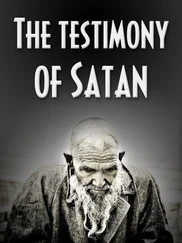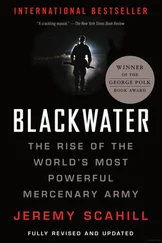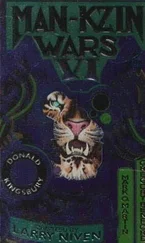The trail of clues supporting this theory is compelling. Special Agent Ammerman, who facilitated Awlaki’s release at JFK Airport, had not only worked the Awlaki case; he was also one of the lead investigators into Timimi after 9/11. “I don’t think anyone wants me talking ’bout what I was involved in,” Ammerman told Catherine Herridge, a Fox News journalist who investigated the case and had close contacts with US law enforcement officials. Herridge believed that the FBI “was trying to cultivate al Awlaki as a human intelligence asset,” as Awlaki himself had alleged years earlier. But had they succeeded?
When Awlaki came to his home, Timimi said, he started talking about recruiting Western jihadists. “Ali had never, in his whole life, even talked to the guy or met him,” Timimi’s lawyer, Edward MacMahon, told me. “Awlaki just showed up at the guy’s house and asked him if he could assist him in finding young men to join the jihad.” MacMahon said that Timimi was suspicious of Awlaki showing up “completely out of the blue.” At the time, the Muslim community was under intense scrutiny from the government—Islamic groups had been raided, Muslims were being regularly detained for questioning and there were justifiable suspicions that moles and informants were infiltrating organizations. “You’d have to go back in time to understand,” said MacMahon. “The community was sure there were all kinds of investigations and Ali was a pretty prominent Muslim. I mean, just look: Why was the guy [Awlaki] there? Why was he asking somebody he’d never met in his whole life to help him get young men for the jihad? It just stunk of entrapment. Ali threw him out of the house.”
Timimi’s friends said he suspected Awlaki may have been working with the FBI and trying to set him up. In 2003, Timimi’s house was raided by federal agents. He was ultimately convicted on charges that he had incited eleven young Muslims, mostly Americans, to join the Taliban in fighting the United States in Afghanistan. The prosecutors alleged his sermons helped inspire the “Northern Virginia Paintball Jihad,” which had trained with paintball guns to join the fight in Afghanistan. In the legal proceedings, Timimi asserted that he believed Awlaki was wearing a wire when he came to his house in late 2002 and that the FBI had recordings of the meeting. When Timimi’s lawyers filed for the alleged tapes in discovery, government lawyers responded in writing, “Al-Timimi seeks the Court to order the government to produce tapes he suggests that Aulaqi made while visiting Al-Timimi. We are aware of no authority for this request.” MacMahon said that the government response suggested “it is a national security issue and that it was classified.” But it wasn’t just the “out of the blue” nature of Awlaki’s visit with Timimi that MacMahon found suspicious. “We thought [Awlaki] was wearing a wire, and we wanted to know how he got” to Timimi’s house. MacMahon later learned that Awlaki was driven to the meeting with Timimi by Nabil Gharbieh, an alleged member of the conspiracy who later cooperated with prosecutors. “How does Anwar Awlaki end up at Ali’s house?” asked MacMahon, before offering his own theory: “Because [Special Agent] Ammerman made Gharbieh take him there.”
Ammerman met with Awlaki when he returned to the DC area in October 2002 and was in fact the agent who had Awlaki released from JFK Airport so that Awlaki could make his flight to DC. Whether the two men discussed Timimi, we do not know. But there are other lingering hints at a connection. “In late 2002, the FBI’s Washington field office received two similar tips from local Muslims: Timimi was running ‘an Islamic group known as the Dar al-Arqam’ that had ‘conducted military-style training,’ FBI special agent John Wyman would later write in an affidavit,” according to the Washington Post, adding, “Wyman and another agent, Wade Ammerman, pounced on the tips.”
Years later, this series of events spurred Republican congressman Frank Wolf of Virginia to demand answers from the FBI. In a letter to FBI director Mueller, Wolf asked: “Is there any connection between the timing of the FBI’s EC [Electronic Communication] on Aulaqi, the motion to vacate his arrest warrant, and Aulaqi’s sudden return to the U.S.?” Wolf also noted that “following his detention at Kennedy [Airport] early on the morning of October 10, 2002, an FBI agent—Special Agent Wade Ammerman in the Washington Field Office—ordered that Aulaqi be released by U.S. customs agents after having been detained on an outstanding warrant,” adding: “This is particularly questionable given the time of these events. The Colorado U.S. Attorney’s motion to dismiss the warrant was not approved until October 11, 2002, a day after the FBI ordered Aulaqi released into the U.S. Why would the FBI order Aulaqi’s release while the warrant for his arrest remained active?” When journalists filed a Freedom of Information Act request seeking the October 8, 2002, FBI intelligence memo and other documents on Awlaki, they were rebuffed. The Bureau sent back “twenty-seven pages of blankness,” citing “national security and an executive order,” according to Herridge, the Fox journalist.
Of course, there are other theories about Awlaki’s visit to the United States and his meeting with Timimi—namely, that Awlaki was actually attempting to recruit young Westerners for jihad. It is also possible that the FBI intervened when Awlaki was detained at JFK to free him because the Bureau wanted to follow him once he was in the United States to investigate his movements and his contacts. It is not uncommon for law enforcement to allow suspects or persons of interest to walk around believing they are free so that they can be monitored.
As for Timimi, he was eventually sentenced to life in prison. Among those who testified against him as government witnesses was Gharbieh, the man who drove Awlaki to meet Timimi. Timimi’s legal team alleged that Timimi was railroaded in a “faux terror” trial born of the post-9/11 panic that another attack was imminent. MacMahon maintained that Timimi was prosecuted based on fears—not evidence. “They weren’t going to take any kind of a chance,” he said. “But, we don’t usually use our judicial system as kind of a holding pen like the British did with the Irish in Northern Ireland.”
MacMahon alleged that the FBI deliberately concealed Awlaki’s role in the Timimi case and believed that had they acknowledged it, Timimi would have been able to use it as evidence in the fight for his freedom. “If they had disclosed that Ammerman facilitated the trip, then I would have gotten into it in detail, but they withheld that information,” he said. “The FBI just will not admit what they did. It would have been critical evidence in Ali’s trial. The poor guy’s serving life. You know, the charge in Ali’s case was recruiting young men to go to the jihad. So, evidence that a government agent—somebody working for the government—came to him and asked him to do it—and he threw him out—would be admissible, would completely refute the charges.”
Years later, Representative Wolf pressed the US government for answers. “How did Aulaqi end up at the home of Ali al Timimi with a government witness shortly after he was allowed back into the U.S.? Was the FBI aware of this meeting in advance” of Awlaki’s return? Whether Awlaki had worked with the FBI in attempting to secure an indictment against Timimi will likely never be known. Awlaki spoke on numerous occasions of the FBI’s attempts to turn him into an asset. Had they succeeded? “Wade Ammerman testified in [Timimi’s] case. To me the evidence is overwhelming that Wade Ammerman tried to flip Anwar Awlaki. Or maybe even thought he had flipped him,” said MacMahon. “I mean, Awlaki was one of the only people in the United States with contact in several states with the hijackers. He was not your garden variety FBI flip target. How could they not have arrested this guy [Awlaki] when they had him in the office? They’re chasing people that are playing paintball when they’ve got this guy in their office.”
Читать дальше












